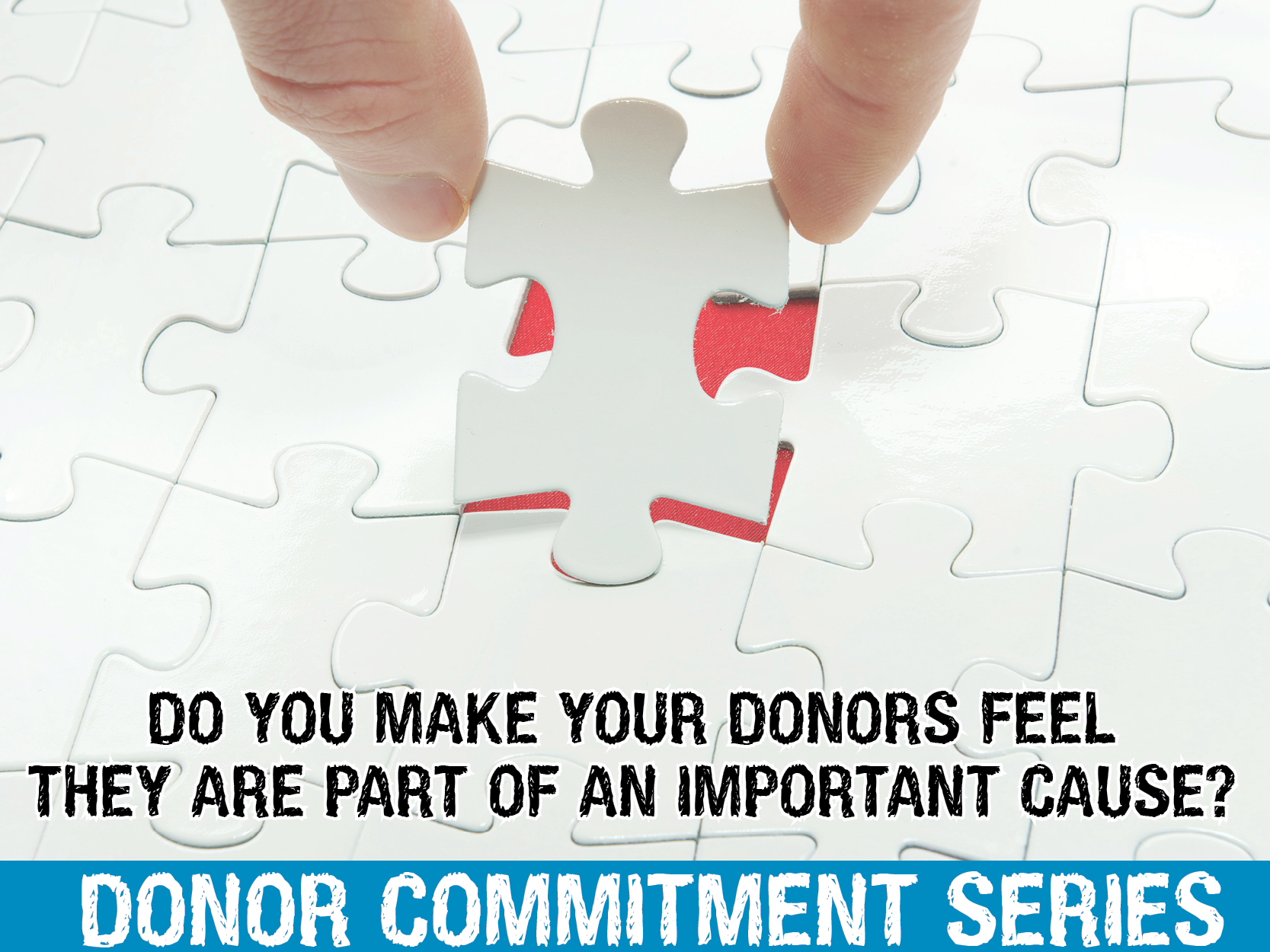It’s not news that the nonprofit sector has a donor retention problem…you’ve likely heard about this “leaky bucket” phenomenon. You know, the one where we’re losing donors at such a high rate that we’re constantly scrambling to replace them…and often, not fast enough.
Today, in the third and final installment of the Donor Commitment Series, I’m going to give you a long list of fundraising, marketing, and communications activities to consider if you’re serious about building stronger relationships with your donors. Implemented effectively, these strategies will improve how donors feel about your organization and increase their engagement.
These recommendations stem from what has been identified by DonorVoice as the seven key drivers of donor loyalty (out of a total of 32 options). Using a research model proven to predict behavior, they have truly given you the keys to the castle.
The seven key drivers are:
- Timeliness of being thanked for their support
- Feeling their involvement is appreciated
- Feeling they are part of an important cause
- Being given opportunities to make their views known
- Feeling the organization is effectively trying to achieve mission
- Receiving information showing who is being helped
- Knowing what to expect when you interact with the organization
So, now what?
Well, consider this menu of options for putting these into action…
Please note that while none of these activities are listed more than once, some certainly apply to more than one driver.
1. Timeliness of being thanked for their support and personalization
- Send thank you letters within 24-48 hours of gift receipt.
- Call donors right away to thank them for their donation.
2. Feeling their involvement is appreciated
- Personally and genuinely thank supporters for giving.
- Invite supporters to be part of your organization in other ways beyond donating.
- Send a card on the one-year anniversary of their first gift.
- Send a welcome package to new donors.
- Ensure your phones are answered politely and enthusiastically.
- Tailor your communications with donors to the areas of your work they’re most interested in and/or have donated to support.
3. Feeling they are part of an important cause
- Use donor-centered language (like the word “you”) to help give donors a feeling of ownership over programs and credit for your results.
- Provide regular updates that underscore the urgency of the issue/s you work on.
- Highlight people of note who support you through a profile or testimonial quote.
- Share the stories of other donors and why they support your organization.
- Send copies of press clips showcasing your work with a note thanking the donor for their help.
4. Being given opportunities to make their views known
- Ask donors what aspects of your work they care about most.
- Ask donors why they give to you.
- Survey donors annually about their satisfaction as supporters.
- Visit and call donors with no intention of asking for a gift.
- Consistently express your desire to hear from donors about any problems or concerns they have.
5. Feeling the organization is effectively trying to achieve mission
- Tell success stories demonstrating progress and impact.
- Provide frequent progress reports on movement towards solution.
- Invite supporters to “insider briefings” or send “insider memos” about new developments in your work.
6. Receiving information showing who is being helped
- Invite those who benefit from your work to share their story.
- Share photos and/or videos of beneficiaries.
- Share notes of thanks sent to you from beneficiaries (with permission, of course).
- Feature one of your beneficiaries as the signer of your thank you letter.
7. Knowing what to expect when you interact with the organization
- Create an acknowledgement process that distinguishes you from others and sets the bar high.
- Prioritize donor service and providing donors with a positive experience in all interactions with your organization.
- Respond to problems or issues promptly and respectfully.
- Be transparent and accountable with financial information. Make audited financial statements and 990s available on your website.
- Be open about changes in programming, mistakes, and lessons learned.
This list is by no means exhaustive. If you’ve got other ideas, I’d love to hear them! I’m always looking to add new things to my bag of tricks.
Tina Cincotti, owner of Funding Change, is a donor communications expert and general nonprofit nerd.
August 14, 2018



